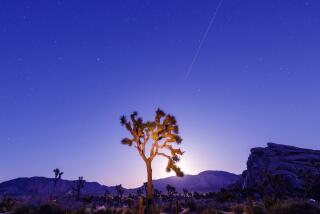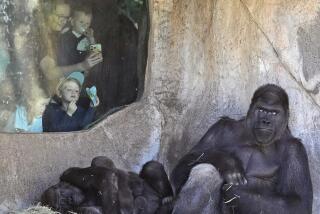Ring around the rock? Astronomers say ‘centaur’ may have debris disk
They’re a cross between asteroids and comets and they bear the name of the man-horse hybrid from Greek mythology: centaur.
Relegated to an otherwise mundane section of our solar system, none of these rocky bodies has ever been observed up close. Their life span in the solar system is relatively short as well. Because of their erratic orbits, scientists believe, centaurs eventually fall into the sun or exit the solar system over a period of millions of years.
But there may be new cause for interest in these rocky wanderers.
Recently, astronomers announced that data collected on the centaur Chiron as it passed in front of a bright star in 2011 suggest that it may possess a circulating disk of debris -- albeit invisible to Earthlings.
“It’s interesting, because Chiron is a centaur -- part of that middle section of the solar system, between Jupiter and Pluto, where we originally weren’t thinking things would be active, but it’s turning out things are quite active,” said Amanda Bosh, an MIT astronomer and a coauthor of a study published Monday in the journal Icarus.
If Chiron has a system of rings, it would join five other bodies in our solar system known to have such a feature: Saturn, Jupiter, Uranus, Neptune and another centaur called Chariklo.
“Until Chariklo’s rings were found, it was commonly believed that these smaller bodies don’t have ring systems,” Bosh said. “If Chiron has a ring system, it will show it’s more common than previously thought.”
Scientists estimate that there are roughly 44,000 centaurs in the solar system and that most occupy the same orbital band.
Chiron, discovered in 1977, is estimated to be about 125 miles wide. It was first classified as an asteroid, but researchers later surmised it possessed a cloud-like coma -- similar to that of a comet -- that may be caused by jets of water and dust erupting from its surface.
And why would an otherwise inert rock be puking matter into space?
Centaurs probably form farther out in the solar system, and as they near the sun, frozen materials may turn to gas, spraying dust and other materials into space, researchers say.
In an effort to get a better idea of what was happening on Chiron, Bosh and her colleagues made plans to observe it as it passed in front of a bright star.
On Nov. 29, 2011, researchers watched this occulation through two large telescopes in Hawaii -- NASA’s Infrared Telescope Facility on Mauna Kea, and the Las Cumbres Observatory Global Telescope Network at Haleakala.
The event lasted just a couple of minutes, but researchers spent much more time analyzing how the starlight changed as the centaur moved in front of it. Instead of presenting a well-defined silhouette, Chiron’s shadow presented some features roughly 180 miles from its center that suggested something surrounding the centaur was blocking the light.
Researchers hypothesize that this may be the result of symmetrical jets of gas and dust erupting from Chiron’s surface, or perhaps rings formed by debris that was captured by the centaur’s gravitational field.
More observation from other telescopes would be necessary to determine the answer, researchers said.
Follow @montemorin for science news







